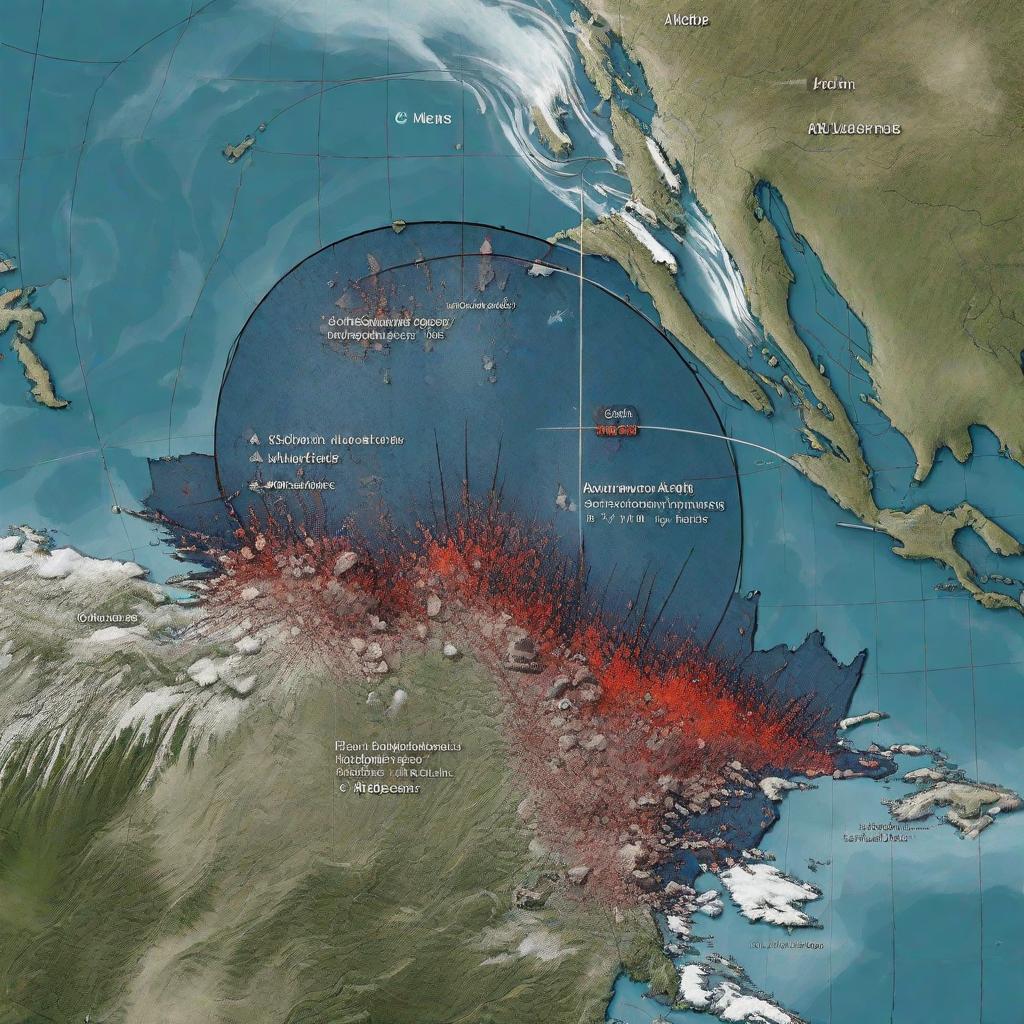The Alaska Earthquake Center is an organization that monitors seismic activity in Alaska and adjacent regions. It was established in 1966 and is based at the University of Alaska Fairbanks. The center’s mission is to provide timely and accurate information about earthquakes and other seismic events to the public, emergency responders, and other stakeholders.
The Alaska Earthquake Center has a network of over 250 seismic stations across Alaska, which record seismic waves from earthquakes and other sources. The center also operates a tsunami warning center for Alaska and the surrounding region. In addition to earthquake monitoring, the center conducts research on seismic hazards, earthquake physics, and related topics. The center’s scientists work closely with other researchers and agencies in Alaska and around the world to improve our understanding of earthquakes and their impacts.
Table of Contents
History and Mission of Alaska Earthquake Center
Establishment and Evolution
The Alaska Earthquake Center (AEC) was established in 1986, following the Great Alaska Earthquake of 1964, which was the most powerful earthquake ever recorded in North America with a magnitude of 9.2. The AEC is a part of the Geophysical Institute at the University of Alaska Fairbanks. It is a statewide seismic network that monitors and analyzes earthquakes, volcanic eruptions, and tsunamis in Alaska. The center is also responsible for providing earthquake information to the public, emergency responders, and government agencies.
Over the years, the AEC has evolved to become one of the most advanced earthquake centers in the world. The center has developed a network of over 400 seismic stations that provide real-time data on earthquakes and volcanic activity in Alaska. The AEC also collaborates with other national and international earthquake centers to share data and research.
Core Objectives
The core objectives of the Alaska Earthquake Center are to:
- Monitor and analyze earthquakes, volcanic eruptions, and tsunamis in Alaska
- Provide accurate and timely earthquake information to the public, emergency responders, and government agencies
- Conduct research on earthquakes and volcanic activity in Alaska
- Develop and maintain a statewide seismic network
- Collaborate with other national and international earthquake centers to share data and research
The AEC’s mission is to reduce the impact of earthquakes, volcanic eruptions, and tsunamis on Alaska’s communities and infrastructure. The center achieves its mission by providing accurate and timely earthquake information to the public, emergency responders, and government agencies. The AEC also conducts research on earthquakes and volcanic activity in Alaska, which helps to improve earthquake prediction and preparedness.
Monitoring and Research Activities
Seismic Monitoring Network
The Alaska Earthquake Center (AEC) operates a 250-station seismic network that monitors earthquake activity across Alaska. The network includes a variety of sensors, including seismometers, accelerometers, and GPS stations. These sensors are used to detect and locate earthquakes, as well as to measure ground motion and deformation. The AEC’s monitoring network is one of the most advanced in the world and provides critical information to scientists, emergency managers, and the public.
Earthquake Data Analysis
In addition to operating a seismic monitoring network, the AEC also conducts extensive data analysis on earthquake activity in Alaska. This includes analyzing seismic data to determine the location, size, and depth of earthquakes and studying the patterns and trends in earthquake activity over time. The AEC’s data analysis is used to improve our understanding of earthquake hazards in Alaska and to develop more accurate earthquake forecasts and predictions.
Public Engagement and Education
The AEC is committed to engaging with the public and educating Alaskans about earthquake hazards. The center provides various resources and information to help individuals and communities prepare for earthquakes and tsunamis, including earthquake safety tips, emergency preparedness guides, and educational materials for schools and community groups. The AEC also hosts public lectures and events to raise awareness about earthquake hazards and to promote earthquake safety.
Overall, the Alaska Earthquake Center’s monitoring and research activities are critical to improving our understanding of earthquake hazards in Alaska and to helping individuals and communities prepare for earthquakes and tsunamis. The center’s advanced seismic monitoring network, data analysis, and public engagement efforts make it a leader in earthquake research and preparedness.
Frequently Asked Questions
How can I get real-time updates on earthquakes in Alaska?
The Alaska Earthquake Center provides real-time updates on earthquakes in Alaska through its website. Users can view the latest earthquakes detected by the center, including their magnitude, location, and time of occurrence. They can also access interactive maps that show the location of the earthquakes and their intensity.
What was the magnitude of the most recent significant earthquake in Alaska?
The most recent significant earthquake in Alaska was a 7.1 magnitude earthquake that occurred on November 30, 2018, near Anchorage. The earthquake caused widespread damage to buildings, roads, and infrastructure in the area.
How does the Alaska Earthquake Center monitor tsunami threats following an earthquake?
The Alaska Earthquake Center monitors tsunami threats following an earthquake through its Tsunami Warning Center. The center uses data from seismometers, tide gauges, and other sources to detect and analyze earthquakes that could trigger a tsunami. The center then issues tsunami warnings and advisories to the public and emergency management officials.
What are the historical records of the largest earthquakes in Alaska?
Alaska has a long history of large earthquakes, with some of the largest earthquakes in the world occurring in the state. The largest earthquake ever recorded in North America was the 1964 Great Alaska Earthquake, which had a magnitude of 9.2. Other significant earthquakes in Alaska include the 1957 Andreanof Islands earthquake (magnitude 8.6) and the 2002 Denali earthquake (magnitude 7.9).
How can I access the Alaska Earthquake Center’s data for research purposes?
Researchers can access the Alaska Earthquake Center’s data for research purposes through the center’s website. The website provides access to earthquake catalogs, waveform data, and other data products. Researchers can also contact the center’s data management team for assistance with accessing and using the data.
What measures are taken in Anchorage for earthquake preparedness and safety?
What measures are taken in Anchorage for earthquake preparedness and safety?
Anchorage, the largest city in Alaska, is located in a seismically active region and is at risk of earthquakes. The city has taken several measures to prepare for earthquakes and ensure public safety. These measures include building codes that require earthquake-resistant construction, emergency response plans, and public education campaigns on earthquake preparedness and safety. The city also conducts regular earthquake drills to test its emergency response capabilities.






















+ There are no comments
Add yours